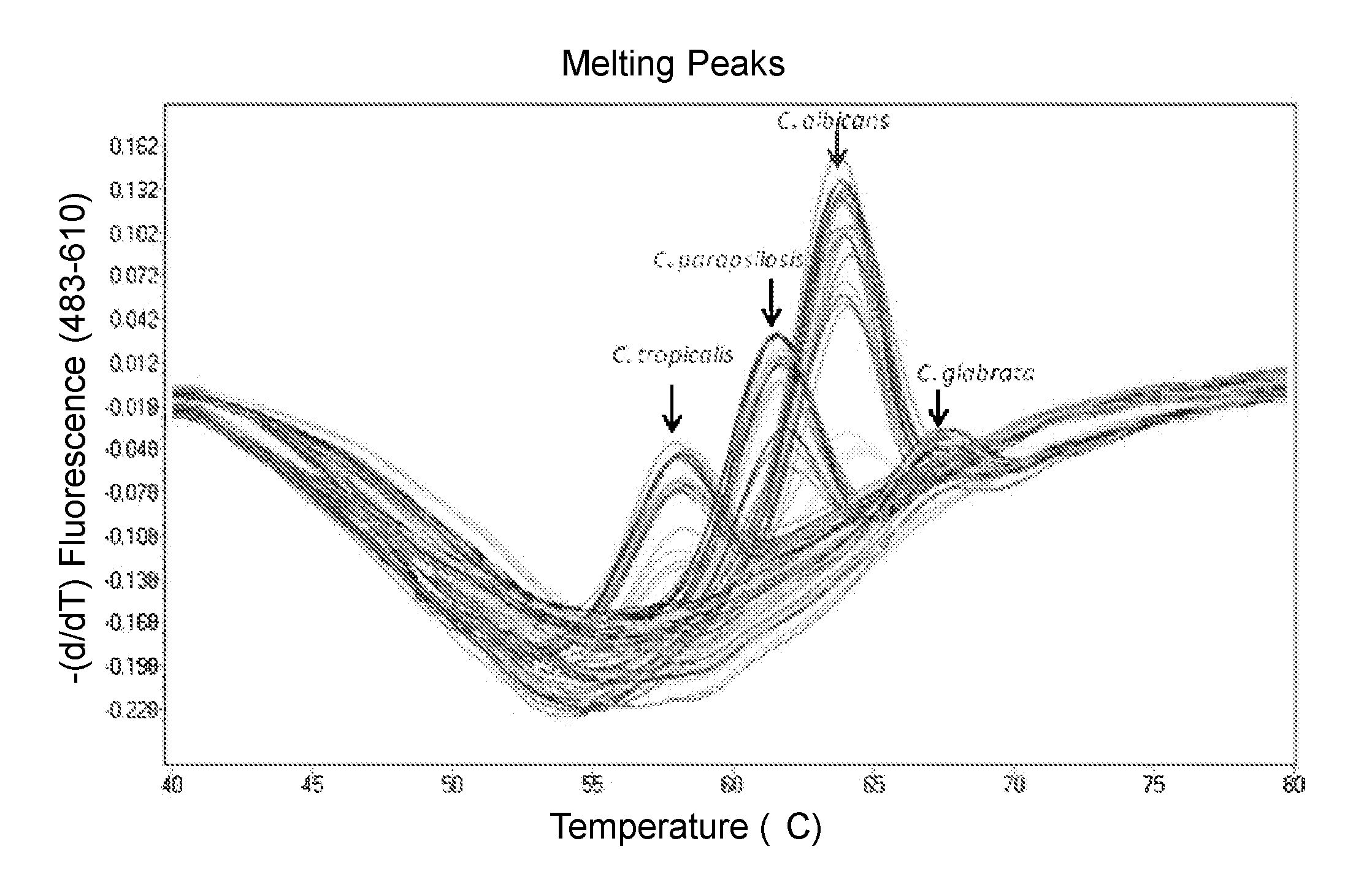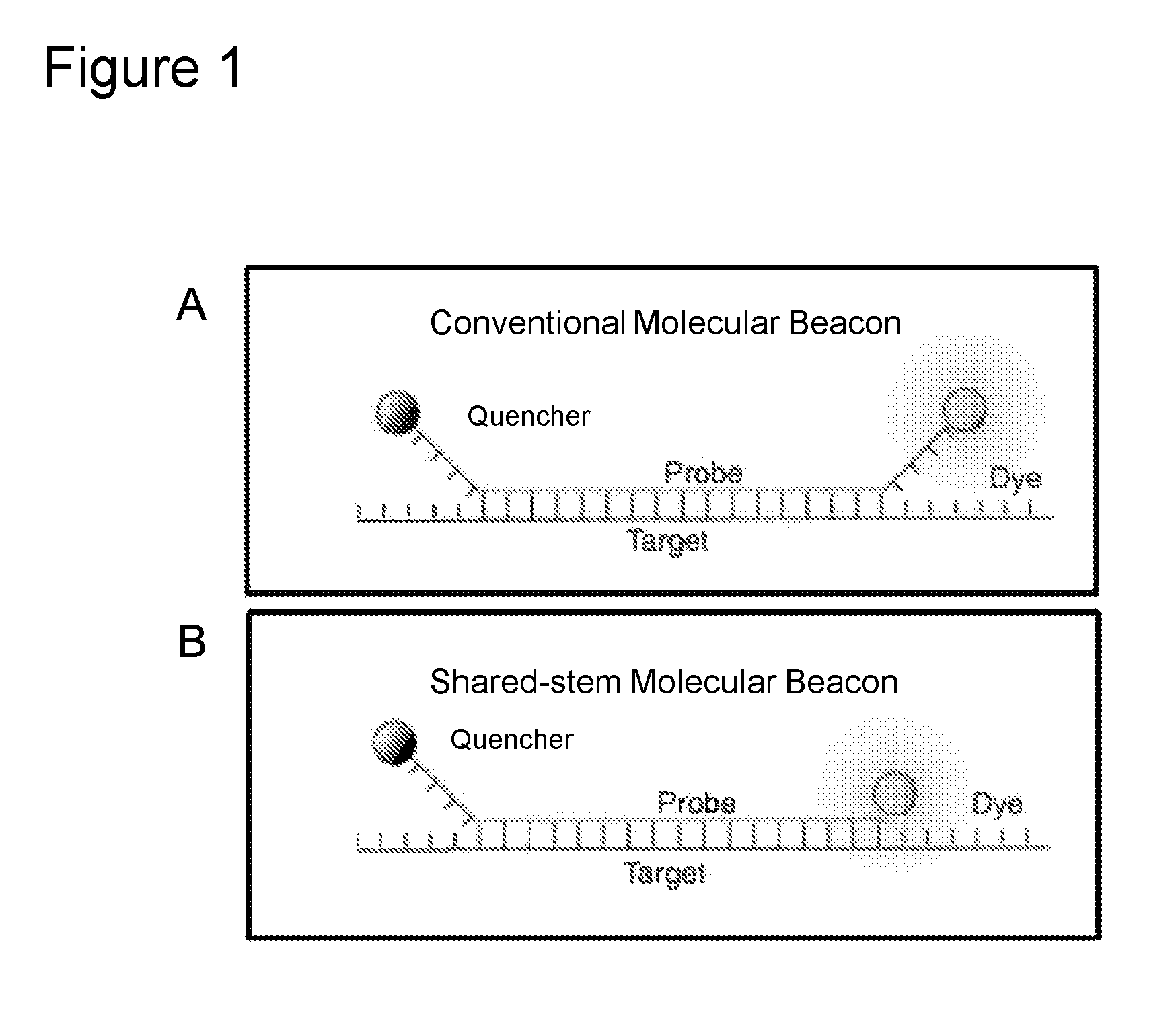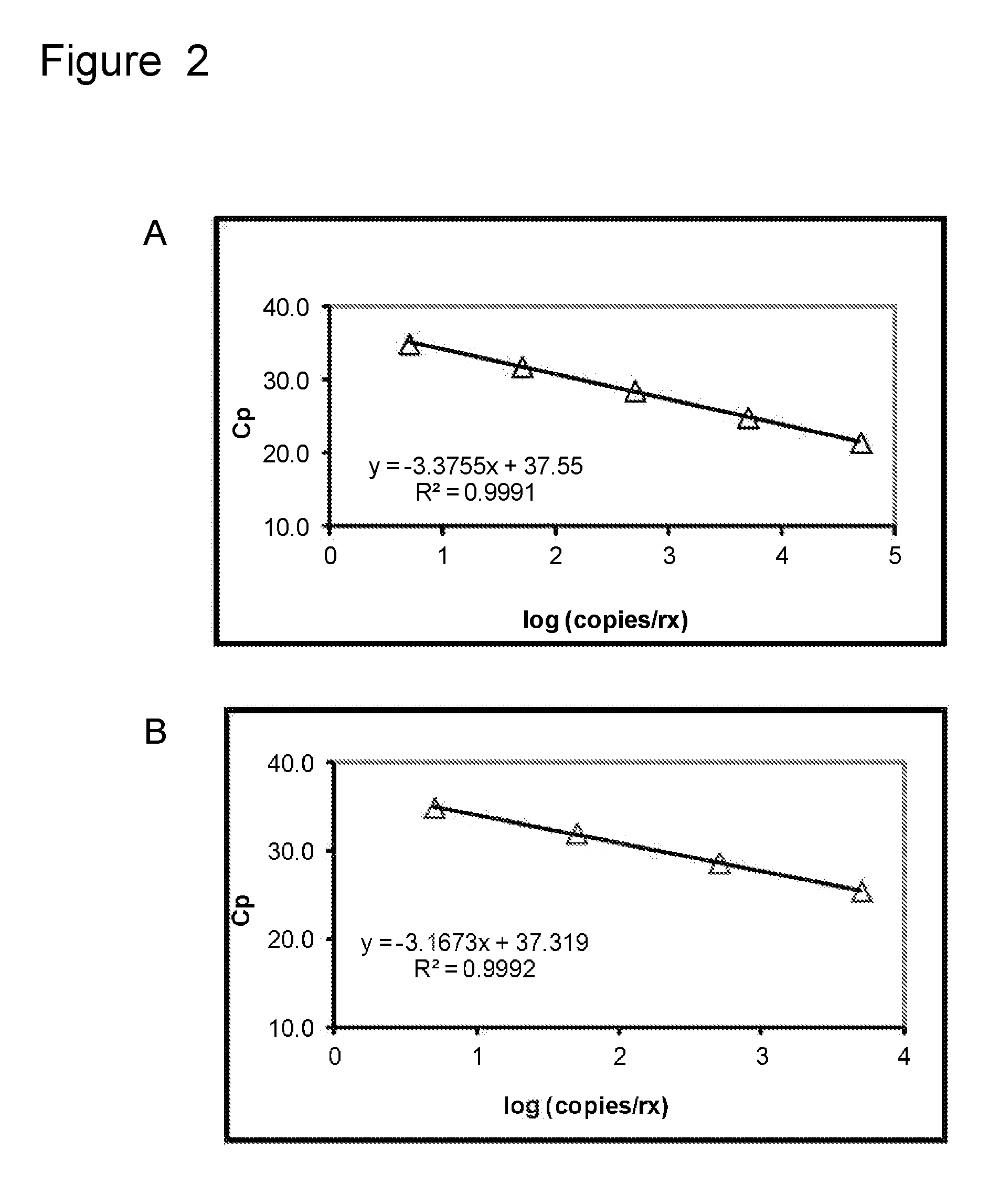Compositions and methods for detection of Candida species
a technology applied in the field of composition and detection method of i > candida /i > species, can solve the problems of life-threatening infections in hospital patients, high risk of such infections in patients on prolonged hospital stays, time-consuming and laborious,
- Summary
- Abstract
- Description
- Claims
- Application Information
AI Technical Summary
Benefits of technology
Problems solved by technology
Method used
Image
Examples
example 1
Detection of Candida krusei Using a Species-Specific Molecular Beacon Probe in a Real-Time PCR Assay
[0116]A general protocol for detecting Candida species using fluorescently labeled molecular beacon probes (e.g., SEQ ID NOs: 1 to 5) is described below. For preparation of Candida cell lysate, 1 mL of PBS, TE, or YPD broth containing spiked Candida cells at concentrations ranging from 104 to 1 Candida cells were added to a tube containing 300 mg of yttrium stabilized zirconium oxide beads. The cells were harvested via centrifugation at 6000 G for 5 minutes and the supernatant was removed. The cells were then washed with 150 to 1500 μL of TE buffer and harvested again via centrifugation at 6000 G. 100 μL of TE buffer was added to the tubes and the tube was placed in a vortexer (Biospec bead beater) at maximum speed for 5 minutes. The resulting Candida lysate was removed and transferred to a clean 1.7 mL polypropylene tube, and was either used directly in a real-time PCR reaction or wa...
example 2
Detection of C. Parapsilosis Using a Species-Specific Molecular Beacon Probe in a Real-Time PCR Assay
[0130]A HEX labeled C. parapsilosis probe (having the sequence of SEQ ID NO: 4) was used at 300 nM concentration in a real-time PCR assay that was performed according to the parameters described in Table 1 above. 100 μl of diluted genomic DNA was added to the PCR reaction mix and 45 cycles of amplification were performed with an annealing temperature of 55° C. A titration using different amounts of genomic DNA template was performed. Real-time PCR data are provided in Table 7 below for reactions containing 0 to 10,000 copies of genomic DNA per reaction. Four replicates for each reaction condition were performed and the average Ct values were calculated. The average amplification efficiency and the PCR efficiency for the reactions were also calculated. Table 7 and FIG. 3A show that the C. parapsilosis molecular beacon probe was used successfully to detect the target nucleic acid molec...
example 3
Detection of C. Tropicalis Using a Species-Specific Molecular Beacon Probe in a Real-Time PCR Assay
[0134]A HEX labeled C. tropicalis probe (having the sequence of SEQ ID NO: 2) was used at 300 nM concentration in a real-time PCR assay that was performed according to the parameters described in Table 1 above. 100 μl of diluted genomic DNA was added to the PCR reaction mix and 45 cycles of amplification were performed with an annealing temperature of 55° C. A titration using different amounts of genomic DNA template was performed. Real-time PCR data are provided in Table 9 for reactions containing 0 to 10,000 (i.e., 0, 100, 1,000, and 10,000) copies of genomic DNA per reaction. Four replicates for each reaction condition were performed and the average Ct values were calculated. The average amplification efficiency and the PCR efficiency for the reactions were also calculated. Table 9 and FIG. 3B show that the C. tropicalis molecular beacon probe was used successfully to detect the tar...
PUM
| Property | Measurement | Unit |
|---|---|---|
| melting temperatures | aaaaa | aaaaa |
| Tm | aaaaa | aaaaa |
| Tm | aaaaa | aaaaa |
Abstract
Description
Claims
Application Information
 Login to View More
Login to View More - R&D
- Intellectual Property
- Life Sciences
- Materials
- Tech Scout
- Unparalleled Data Quality
- Higher Quality Content
- 60% Fewer Hallucinations
Browse by: Latest US Patents, China's latest patents, Technical Efficacy Thesaurus, Application Domain, Technology Topic, Popular Technical Reports.
© 2025 PatSnap. All rights reserved.Legal|Privacy policy|Modern Slavery Act Transparency Statement|Sitemap|About US| Contact US: help@patsnap.com



